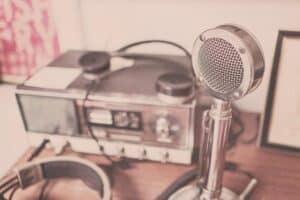In the pantheon of audio technologies, few components have as rich and fascinating a history as the audio tube or valve. As the world rapidly shifted towards increasingly sophisticated forms of technology, the tube stood its ground, weaving itself into the very fabric of audio history. This article traces the timeline of audio tubes, from their inception to the present day, offering a deep dive into the technological and cultural factors that have shaped their journey.
Beginnings: The Dawn of the Tube Era
The story of audio tubes commences in the early 1900s, specifically in 1907, when American inventor Lee De Forest unveiled the triode, which he called the ‘Audion’. As a three-electrode device, the triode became the foundational stone for electrical signal amplification. Its genius lay in its ability to manipulate the electron flow between the cathode and anode through the intermediary control grid, offering a newfound power to amplify.

Radios of the era, cumbersome and often weak in reception, found a savior in the tube. Suddenly, households could access broadcasts from far-off stations, connecting listeners to a broader world of news, music, and entertainment. The 1920s and 1930s became the Golden Age of Radio, and by extension, the tube’s golden era.
War and Innovation: The Tube’s Essential Role
The onset of World War II marked a distinct phase for tube technology. Recognized for its value in radar systems and long-range communication, the tube became indispensable. Military needs drove advancements, pushing for improved reliability, durability, and performance. Tubes designed for radar differed from audio tubes but shared foundational principles. This era saw innovations in materials and production techniques, which later trickled down to consumer audio products.
Challenged by the Transistor

Post-war years brought a surge in consumer electronics, with the television and hi-fi audio systems becoming household staples. But as the 1950s progressed, a new player entered the arena: the transistor. Born out of the laboratories of Bell Labs in the late 1940s, these small, semiconductor-based devices were poised to revolutionize electronics.
Transistors promised several advantages over tubes: they consumed less power, generated minimal heat, were far smaller, and, most importantly, were less fragile. By the 1960s, transistor-based devices started to dominate, pushing tube technology to the periphery. Radios, televisions, and amplifiers transitioned to this new technology, and for a while, it seemed the tube’s reign had ended.
The Undying Allure: The Tube’s Resurgence
Despite the global shift towards transistors, a dedicated cohort remained loyal to tubes. For them, the debate wasn’t just about efficiency or size; it was about sound quality. Tubes imparted a warmth and character to the audio that transistors couldn’t replicate. The harmonic distortions introduced by tubes, rather than being seen as imperfections, were embraced for the unique tonal colorations they provided.

By the 1980s, this undercurrent of tube appreciation began to swell into a full-fledged revival. The burgeoning community of audiophiles, along with musicians and producers, started to champion the tube’s cause. High-end audio manufacturers responded to this demand, producing state-of-the-art tube amplifiers, DACs, and other equipment. The used market, too, flourished, with vintage tube gear fetching impressive prices.
Tubes in the Modern Era

Today, the tube has secured its place in both niche and mainstream audio circles. Modern tube designs benefit from a century of refinement, ensuring reliability, longevity, and sonic excellence. Hybrid systems, which combine tube and solid-state topologies, have become increasingly popular, bridging the gap between old and new.
The resurgence of vinyl records, which many argue pairs best with tube amplification, has given further impetus to the tube’s popularity. In professional music production, tube microphones, preamps, and compressors are highly sought after for the distinct warmth and texture they impart.
Conclusion: The Timeless Tube
In retrospect, the audio tube’s journey mirrors broader themes in technology and culture. It’s a story of innovation, obsolescence, and rebirth. But more than that, it’s a testament to the human affinity for warmth, nostalgia, and authenticity.
The world of audio, much like any art form, isn’t merely about precision or efficiency; it’s about emotion and experience. In the tube, we find a component that, despite its age, resonates with our intrinsic desire for a sound that feels ‘alive’. As we stride further into the 21st century, with all its digital wonders, the tube remains a beacon of analog excellence, a reminder of a time when warmth was not just a sonic attribute but a way of life.





